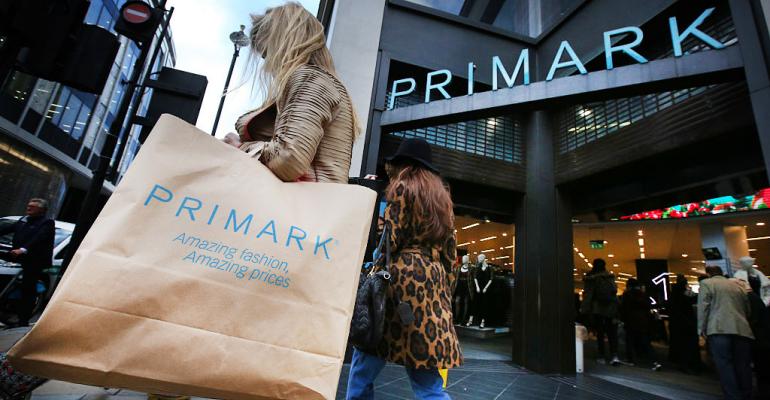When Primark took over one floor in the former Sears anchor space at King of Prussia mall in November 2015, the retailer opened its doors just in time for Black Friday and that year’s holiday shopping season.
That might have looked like a close call on the calendar, but the Primark store at King of Prussia quickly lived up to the potential of the rest of the chain. The chain also maintained its popular standing with shoppers at the Boston Downtown Crossing center, which opened in September 2015.
For retail industry insiders, Primark has the retail savvy and sales prowess to live up to the excitement around its arrival in the U.S., sometimes dubbed the “Irish invasion.”
“I think they can grow the footprint pretty fast,” says Jan Kniffen, CEO of J. Rogers Kniffen Worldwide Enterprises, an equity research and financial management consulting firm specializing in retail. “Primark is at the intersection of cheap, fast-fashion and department store retailing.”
In terms of how fast, Kniffen says the brand can expand to 300 stores in the U.S., which offers huge potential for an inpouring of revenue from the retailer. Primark, which hails from Ireland and is owned by the U.K.-based Associated British Foods, has already opened eight of its 10 currently planned stores.
“Once the model is perfected and Primark is happy with it, I don't see any reason [it] cannot build 40 or 50 of those stores a year,” Kniffen says. “I think the developers would love to have them.”
Primark stores generate an estimated $800 in sales per sq. ft., which makes them highly desirable tenants that would be welcome in any property. The brand will be mainly mall-based in the United States.
Primark had Boston at ‘Hello’
At the Boston Downtown Crossing, Primark occupies four floors in the historic Burnham Building, the former Filene’s Department Store flagship, now owned by New York City-based Millennium Partners. The brand quickly endeared itself to shoppers, both as a shopping destination and social meeting place in front if its ‘Hello Boston’ sign, according to officials at the Downtown Boston Business Improvement District.
“Tourists knew about the brand already, so there was a buzz,” says David Ertischek, the communications and social media manager for the BID. “There were lines out the door the day they opened, and there have been lines ever since. It is common to see people with multiple Primark bags.”
The foot traffic has also helped boost spending in the area at other retailers, such as Old Navy and Macy’s, Ertischek says.
The Boston Primark store totaled about 77,300 sq. ft. when it opened, and recently expanded to around 92,400 or 92,800 sq. ft., according to various news reports.
One of the reasons for such a rapid expansion is that Primark has broad appeal to consumers who shop regularly at both mid-range as well as bargain-priced brands. Kniffen has walked through all of the current Primark U.S. stores, as well as talked with shoppers. Customers that he queried at the Boston Downtown Crossing said they also shopped at T.J. Maxx, Marshalls and H&M, while shoppers at the Primark in King of Prussia patronized Kohl’s, Macy’s and J.C. Penney.
Primark’s average price point is $6, Kniffen notes. That is especially attractive to shoppers who frequent Ross Stores, where the average price point is $10; Burlington and T.J. Maxx, where the average is $14, or Macy’s, which has a $26 average.
Primark’s model is reminiscent of dominant fast-fashion and warehouse operators, built on a tightly controlled supply chain and private labeling of its fast-fashion and other goods. In that sense, the retailer operates similarly to fast-fashion brands like H&M and Zara. The company can also accept substantially smaller gross margins than other retailers—like Costco—and offer goods to consumers at the lower price points.
The retailer is happy to accept margins ranging between 20 percent and 27 percent, according to Kniffen. Meanwhile Kohl’s and Macy’s aim for 36 percent and 40 percent, respectively, he said.
“They are performing extraordinarily well, from the point of view of sales per square foot,” Kniffen says. “My guess is that their tests have gone fine, and they are likely to ramp up production after next year, once they get the next 10 builds.”





